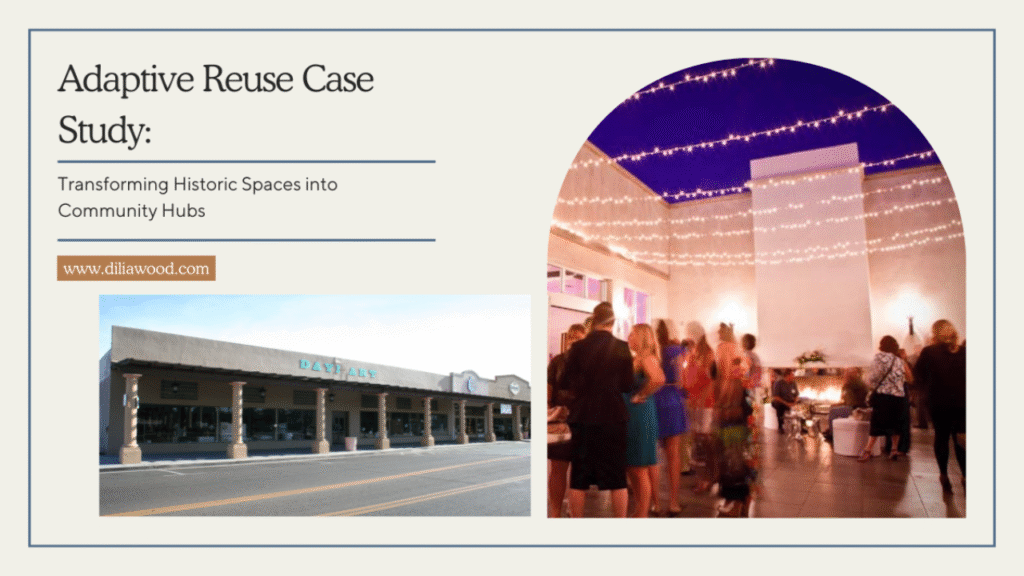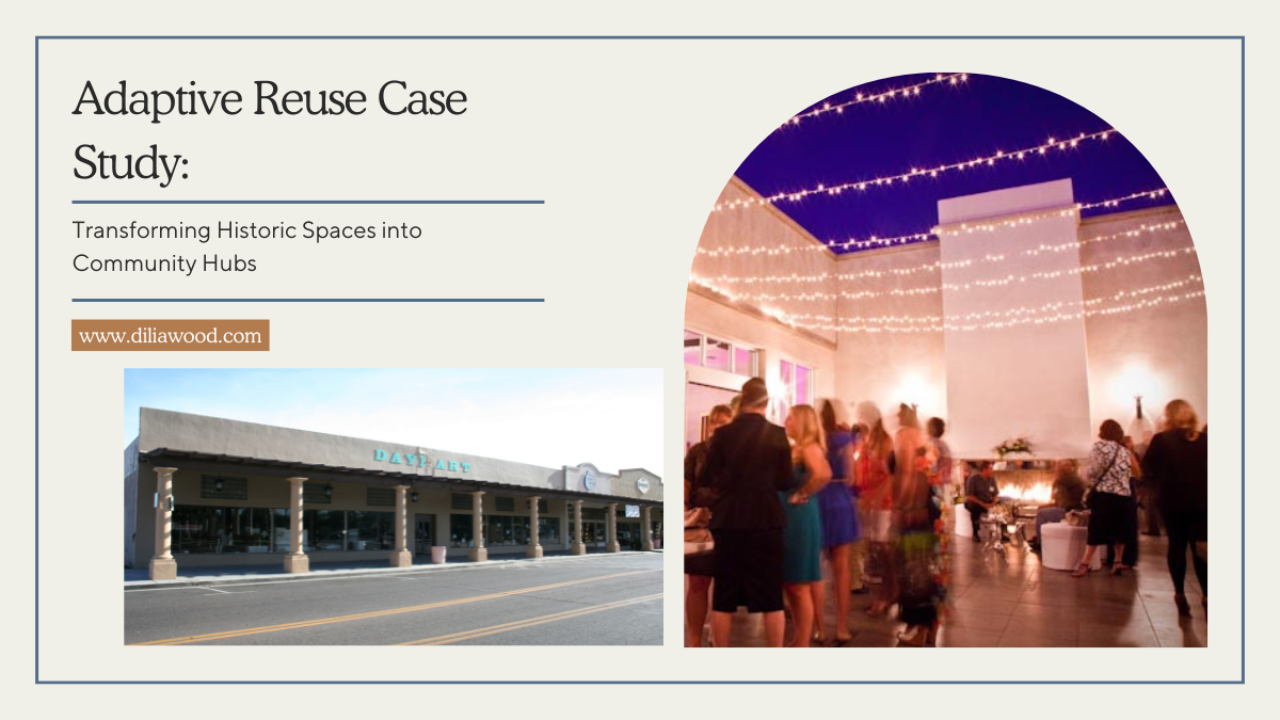
Across cities worldwide, countless buildings sit empty—old warehouses, defunct schools, disused malls—wasting valuable urban space. Rather than demolishing and rebuilding, a growing movement is breathing new life into these structures through adaptive reuse. This approach transforms vacant buildings into vibrant community hubs, supporting cultural, educational, social, and economic activity in sustainable and inclusive ways.
This article explores the strategies, benefits, and best practices of adaptive reuse for community revitalization.
Overview Table: Core Aspects of Adaptive Reuse for Community Hubs
| Aspect | Key Benefit |
|---|---|
| Sustainability | Reduces construction waste and carbon footprint |
| Cultural Preservation | Maintains architectural heritage and local identity |
| Economic Efficiency | Cuts redevelopment costs compared to new builds |
| Community Development | Creates accessible spaces for services and interaction |
| Flexibility | Enables multi-use functionality tailored to community needs |
| Urban Revitalization | Activates underused areas, increasing safety and vibrancy |
1. What Is Adaptive Reuse?
Adaptive reuse is the process of taking an old, obsolete, or abandoned structure and repurposing it for a new function while retaining its core architectural elements. When these buildings are transformed into community hubs, they become platforms for local:
- Nonprofits
- Education and skills training
- Cultural activities and events
- Health and wellness services
- Entrepreneurial incubators
This practice turns architectural decay into opportunity, often revitalizing entire neighborhoods in the process.
2. Why Vacant Buildings Are a Community Asset
Vacant buildings may seem like a problem, but they hold immense potential:
- Location: Often centrally situated with existing transport access
- Character: Offer distinctive architectural charm and cultural value
- Cost-effectiveness: Existing structures can be cheaper than new development
- Space availability: Large layouts allow for diverse programming
Through creative design and community input, these spaces can become safe, inclusive, and inspiring environments for residents.
3. Types of Community Hubs Created Through Adaptive Reuse
| Original Use | Repurposed As |
|---|---|
| Abandoned schools | Learning centers, community classrooms |
| Old factories | Maker spaces, art studios, co-working hubs |
| Empty churches | Cultural venues, performance halls, shelters |
| Defunct retail stores | Food cooperatives, health clinics, skill labs |
| Vacant libraries | Digital access points, youth centers |
These examples reflect how adaptive reuse aligns design with the unique needs of a community.
4. Key Steps in Creating a Community Hub via Adaptive Reuse
Step 1: Community Engagement
- Conduct surveys, town halls, and interviews to understand needs
- Include local leaders, youth, and marginalized voices in planning
Step 2: Feasibility Study
- Assess the building’s condition, zoning, ownership, and safety
- Evaluate costs for renovation versus new construction
Step 3: Design and Planning
- Balance preservation of historic elements with modern updates
- Prioritize accessibility, flexibility, and environmental efficiency
Step 4: Fundraising and Partnerships
- Tap into grants, philanthropic donors, and public-private partnerships
- Involve NGOs, government bodies, and local businesses
Step 5: Implementation and Programming
- Ensure inclusive programming reflecting community needs
- Establish a maintenance and operations plan for sustainability
5. Benefits of Adaptive Reuse for Communities
| Category | Benefit Description |
|---|---|
| Environmental | Less demolition waste, reuse of materials, urban greening |
| Economic | Affordable creation of new services and jobs |
| Cultural | Preserves landmarks and storytelling opportunities |
| Social | Creates gathering places for all age groups |
| Educational | Supports innovation, learning, and skill-sharing |
These benefits are amplified when design centers equity, accessibility, and long-term stewardship.
6. Challenges and How to Address Them
| Challenge | Solution |
|---|---|
| Structural limitations | Engage architects/engineers experienced in retrofits |
| Funding constraints | Combine local crowdfunding with government or NGO support |
| Regulatory hurdles | Work with urban planners to ease zoning or historic restrictions |
| Community skepticism | Involve locals from the start and ensure transparent communication |
| Long-term maintenance | Establish local ownership and sustainable revenue models |
Mitigating these barriers requires multidisciplinary collaboration and continuous community participation.
7. Real-World Examples of Adaptive Reuse as Community Hubs
| City | Project | Use Case |
|---|---|---|
| Detroit, USA | The Green Garage | Co-working and sustainability education center |
| Barcelona, Spain | Can Batlló | A former textile factory turned into a civic center |
| Mumbai, India | Kitab Khana | Historic building reused as public library/bookstore |
| Sydney, Australia | Carriageworks | Railway depot transformed into cultural arts venue |
| Cape Town, South Africa | The Old Biscuit Mill | Former factory now a hub for artisan markets |
These projects highlight how adaptive reuse brings together culture, economy, and community under one roof.
3 Best One-Line FAQs
1. How does adaptive reuse support sustainability?
It reduces the need for new materials, minimizes waste, and preserves embodied energy.
2. Can small nonprofits lead adaptive reuse projects?
Yes, especially with grassroots partnerships, community support, and grant funding.
3. What makes an adaptive reuse project successful?
Community involvement, flexible design, and sustainable operations are key success factors.
Conclusion
As urban areas grapple with space shortages, rising construction costs, and social disconnection, adaptive reuse offers a smart and human-centered solution. By transforming vacant buildings into dynamic community hubs, we create spaces that reflect local identity, foster inclusion, and promote sustainability. Instead of erasing the past, adaptive reuse celebrates it—while building a more connected, resilient future.

